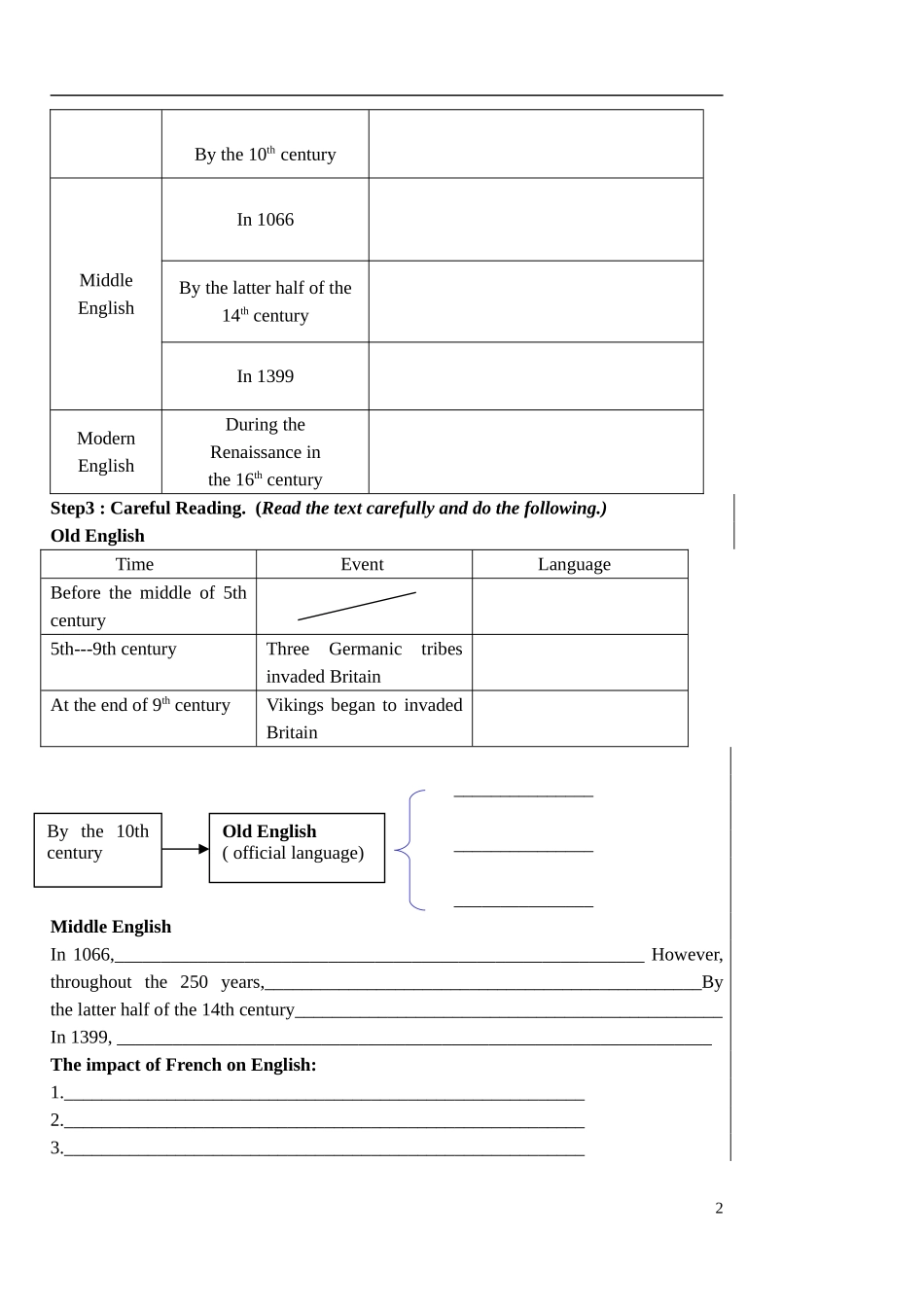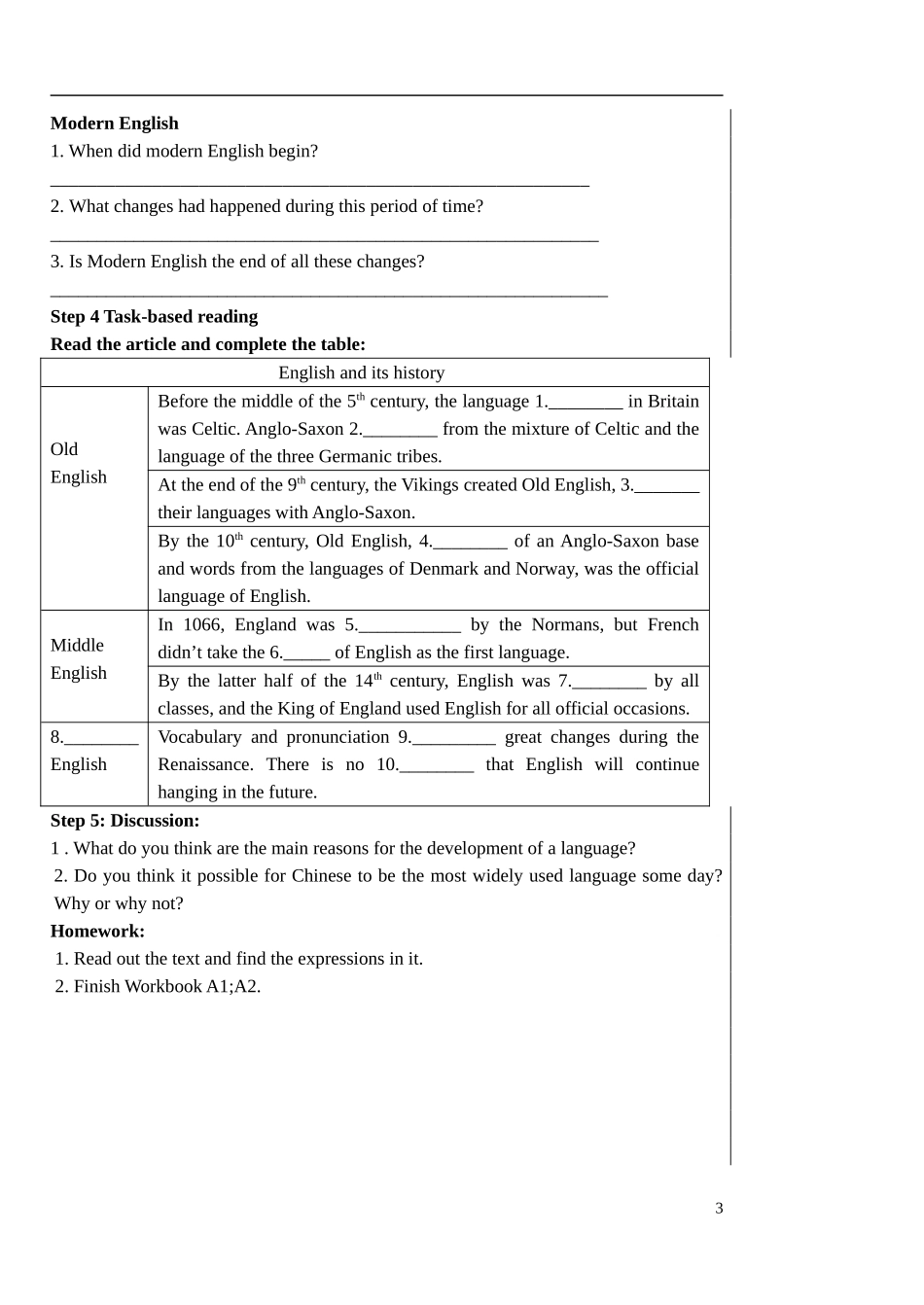M3 U2 English and its historyAims: 1. Learn about English history. 2. Manage to get the general idea of the passage. 3. Learn how to read a history article..Points: 1. Learn about the development of English.2. Understand the expressions in the text and try to make sense of them.Procedures:Step 1: Lead-inAnswer the following questions:1. What are the ways of communicating with each other?2. Which is the most widely used language in the world?3. Read part of the sonnet (十四行诗)by Shakespear:Shall I compare thee to a summer's day? ___________Thou art more lovely and more temperate: ___________Rough winds do shake the darling buds of May, And summer's lease hath all too short a date: ___________Sometime too hot the eye of heaven shines, ___________...(我怎么能够把你来比作夏天? 你不独比它可爱也比它温婉: 狂风把五月宠爱的嫩蕊作践, 夏天出赁的期限又未免太短: 天上的眼睛有时照得太酷烈……)4. What are the underlined words used as today?____________________________________________________________5. What conclusion can we draw?____________________________________________________________(How did this happen? That’s what we are going to learn today. What’s the title of the passage? What kind of article is it? What should we focus on when reading this kind of article?)Step 2: Fast ReadingRead the passage fast and complete the table:The Development of EnglishKindsTimeEventsOld EnglishBefore the middle of the 5th centuryAt the end of the 9th century 1By the 10th centuryMiddle EnglishIn 1066By the latter half of the 14th centuryIn 1399Modern EnglishDuring theRenaissance inthe 16th centuryStep3 : Careful Reading. (Read the text carefully and do the following.)Old EnglishTime EventLanguageBefore the middle of 5th century5th---9th centuryThree Ge...


